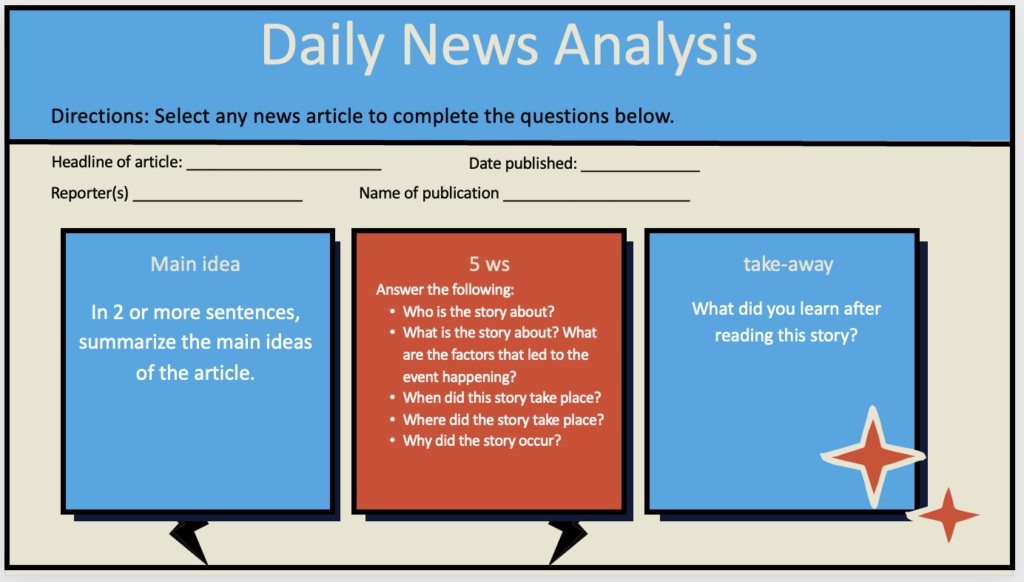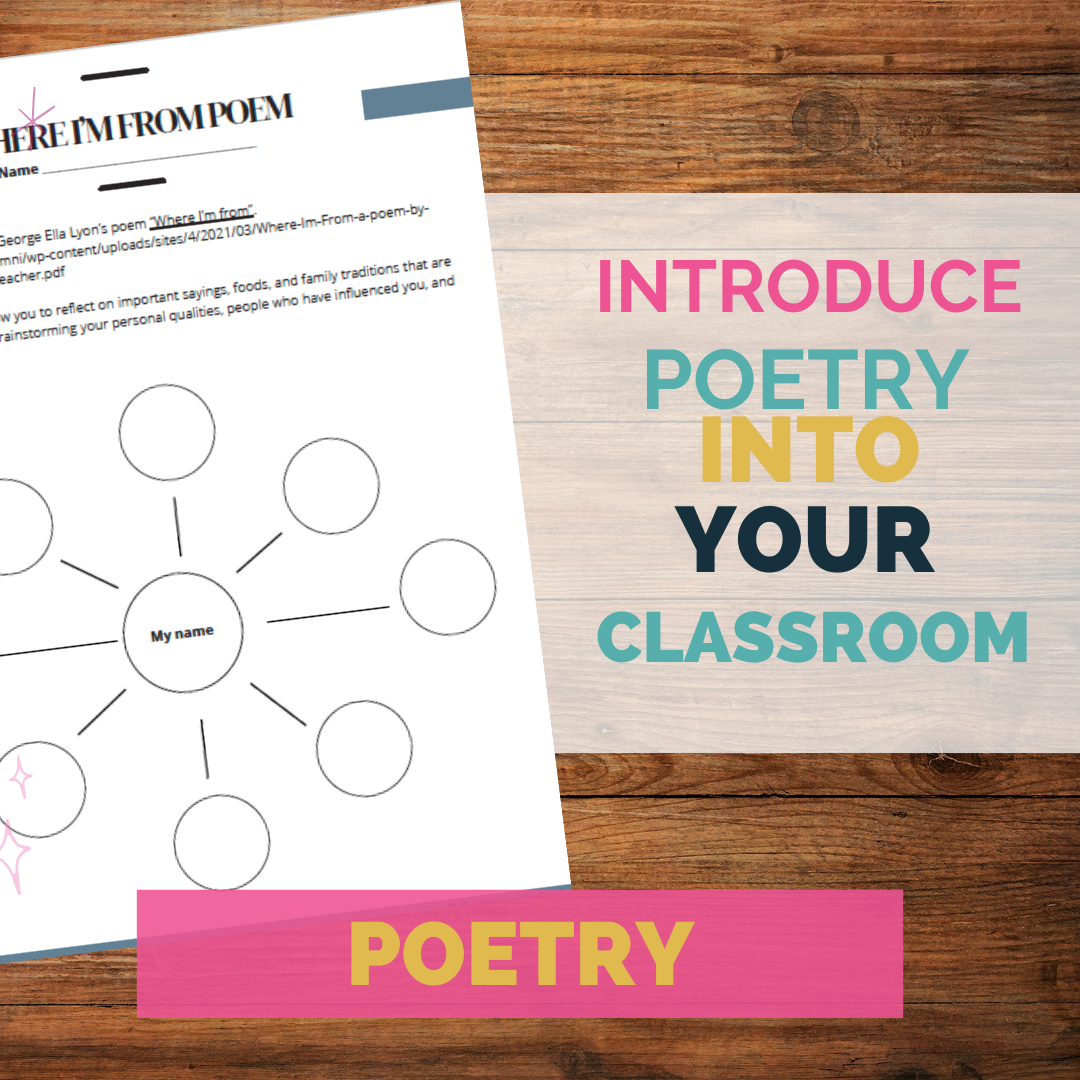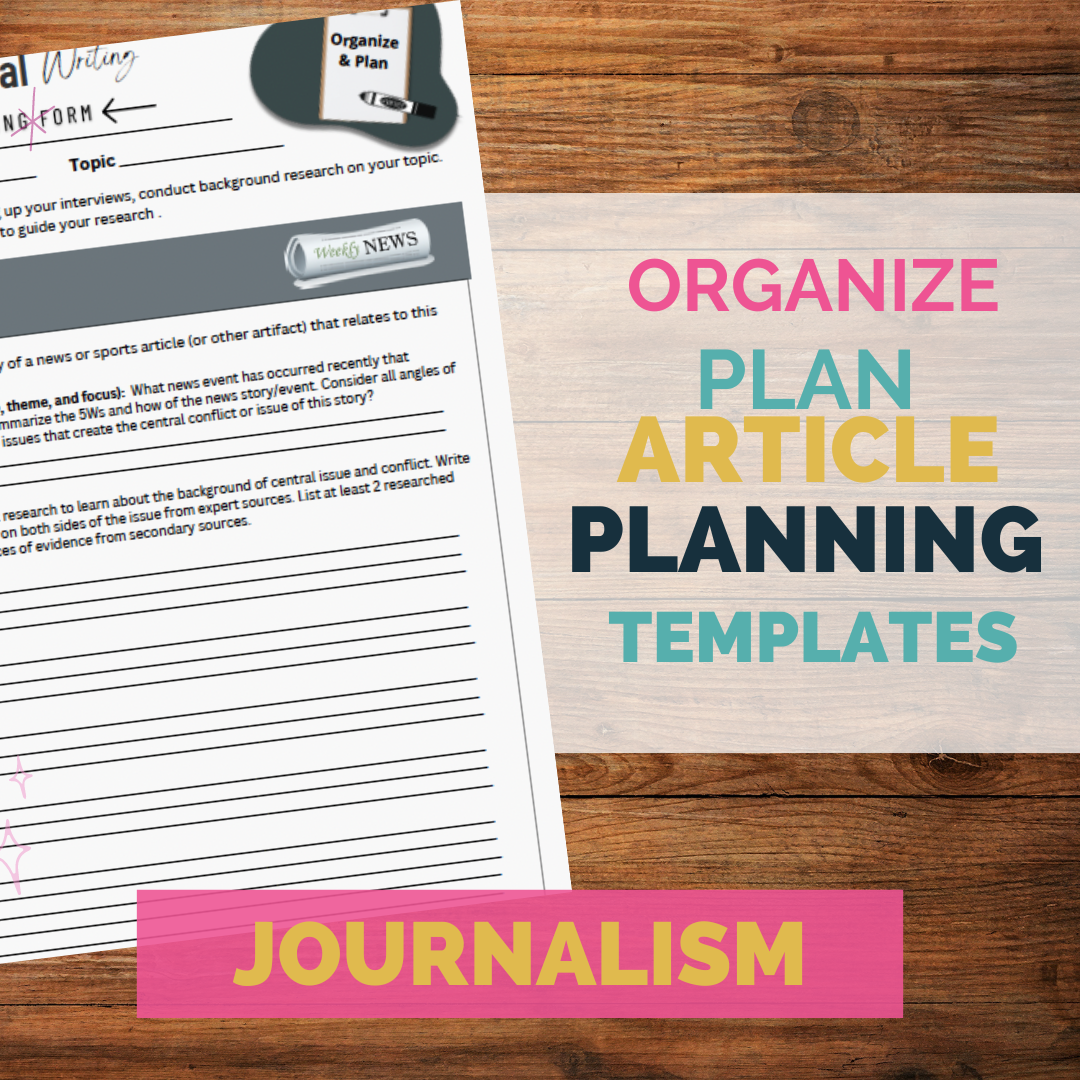What are Weekly Current Events Bell Ringers?
At the start of a lesson, bell ringers are short activities designed to engage students and transition them into the learning mindset. When it comes to weekly current events, these bell ringers focus on recent news stories, controversies, or global events. They can be presented in various formats – quizzes, discussions, short videos, or even news article analyses. The goal is to foster awareness of world events and cultivate a habit of staying informed.


Building Media Literacy Skills
So, why is integrating current events into the classroom through bell ringers crucial for building media literacy skills?
Critical Thinking and Analysis: Encountering fresh news stories each week pushes students to critically analyze the information. They’ll need to decipher the main points, the perspective of the report, and any underlying biases. This ongoing practice sharpens their critical thinking skills.
Diverse Perspectives: By selecting news stories from different sources and regions, students are exposed to diverse viewpoints. This not only broadens their worldview but also teaches them the importance of understanding a story from multiple angles before forming an opinion.
Fact-Checking: In an era of misinformation, fact-checking is a skill of paramount importance. Regular engagement with current events encourages students to cross-reference information, fostering a healthy skepticism and reducing the chances of being misled.
Connecting Global Events to Curriculum: Weekly bell ringers can bridge the gap between textbook learning and the real world. For instance, a current event regarding climate change can seamlessly tie into a science or geography lesson.
Encouraging Informed Discussion: Engaging in debates or discussions about current events enhances students’ ability to articulate their viewpoints based on evidence and logic. It also teaches them to respect diverse opinions.
The Bigger Picture
Beyond individual skills, there’s a broader societal implication to consider. A population that is media literate is better equipped to participate in democratic processes. Informed citizens can make decisions based on accurate information, challenge misinformation, and demand transparency and accountability from those in power.
Bringing Weekly Current Events to Your Class
Weekly current events bell ringers serve a dual purpose. On the one hand, they enhance students’ general knowledge and keep them connected to the world. On the other, they play a pivotal role in molding discerning, media-literate individuals who can navigate the digital age with confidence and responsibility. In this ever-evolving media landscape, educators must prioritize media literacy, and bell ringers offer a practical and engaging way to do so.





